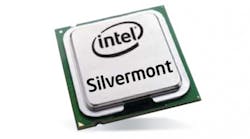Sales of smart phones and tablets continue to outpace PCs and drive new demand for microprocessors, as a new report on the processor market illustrates. The global market for processor microchips rose by nearly 25% in 2013, propelled by growth in handheld devices.
Industry researcher IHS reported in December that worldwide processor shipments would reach 1.5 billion units by the end of 2013, up from 1.2 billion in 2012 (Fig. 1). The group also noted that each quarter in 2013 saw a “significant rise in volume compared to the same periods in 2012.”
“The first half of the year, in particular, yielded solid growth, up 27% in the first quarter on an annual basis, and up 24% in the second quarter,” IHS reported, adding that third-quarter and fourth-quarter growth was expected to be in line with those numbers as well.
IHS counts traditional chips implanted at the heart of machines such as desktop PCs and servers, as well as mobile counterparts used in notebook computers, smart phones, and tablets, in its calculations. Mobile versions include standalone application processors and systems-on-chips (SoCs) that combine a baseband processor with an application processor.
With a decline in demand for PCs recently, smart phones and tablets continue to make the difference in the marketplace.
“The overall processor market would not be so healthy if it weren’t for smart phones and tablets,” said Gerry Xu, senior analyst of processor research for IHS, in announcing the report. “The PC market that traditionally drove the growth of the microprocessor segment has slowed. The new mobile platforms have more than picked up the slack, delivering both large volumes and fast growth for processor shipments.”
The largest growth in the processor segment in 2013 was in tablets, up 40% to 53.5 million units. Smart phones were a close second, up 38% to 204 million units. Comparatively, chip shipments to the PC segment were generally down every quarter compared to a year earlier.
“The decline is not surprising, as PCs have struggled to compete against more popular devices like mobile handsets and tablets,” IHS reported. “Sluggish PC sales, in turn, have affected processors being shipped to the space.”
Within the PC segment, processor shipments to notebook computers were down 2% for the year, while shipments to desktop PCs were down a much larger 13%, IHS said. Processor shipments fared better in the server sector, rising to 4.8 million units in the second quarter compared to 4.6 million in the year-earlier period.
Product News
New processors continue to make their way to the market. IHS additionally reported that Intel remained the dominant force in PC processors, with 84% market share overall. The chipmaker is also focused on power efficiency and improved computing performance with its latest Atom processor, which will be used in PCs, servers, tablets, and smart phones, “virtually all key segments of the processor market,” IHS said.
Intel’s latest Atom 22-nm multicore SoC processors, for instance, are 64-bit multicore processors with USB 3.0 and graphics support, targeting high-performance, low-power applications such as smart phones and intelligent embedded systems (Fig. 2). Manufactured using the company’s Tri-Gate CMOS technology, this next-generation Atom brings performance increases and improved energy efficiency compared to competing processors using planar transistor technology, “all while delivering industry-leading performance-per-watt efficiency,” according to Intel.
Also new to the market, InvenSense’s six-axis MPU-6515 MEMS SoC and corresponding MotionApps software platform are optimized to support new functions of the Android KitKat. The SoC incorporates an enhanced version of InvenSense’s Digital Motion Processor to offload complex motion protocols and algorithms from the application processor as required by Android KitKat for low-power inertial location tracking and contextual awareness, the company says.









